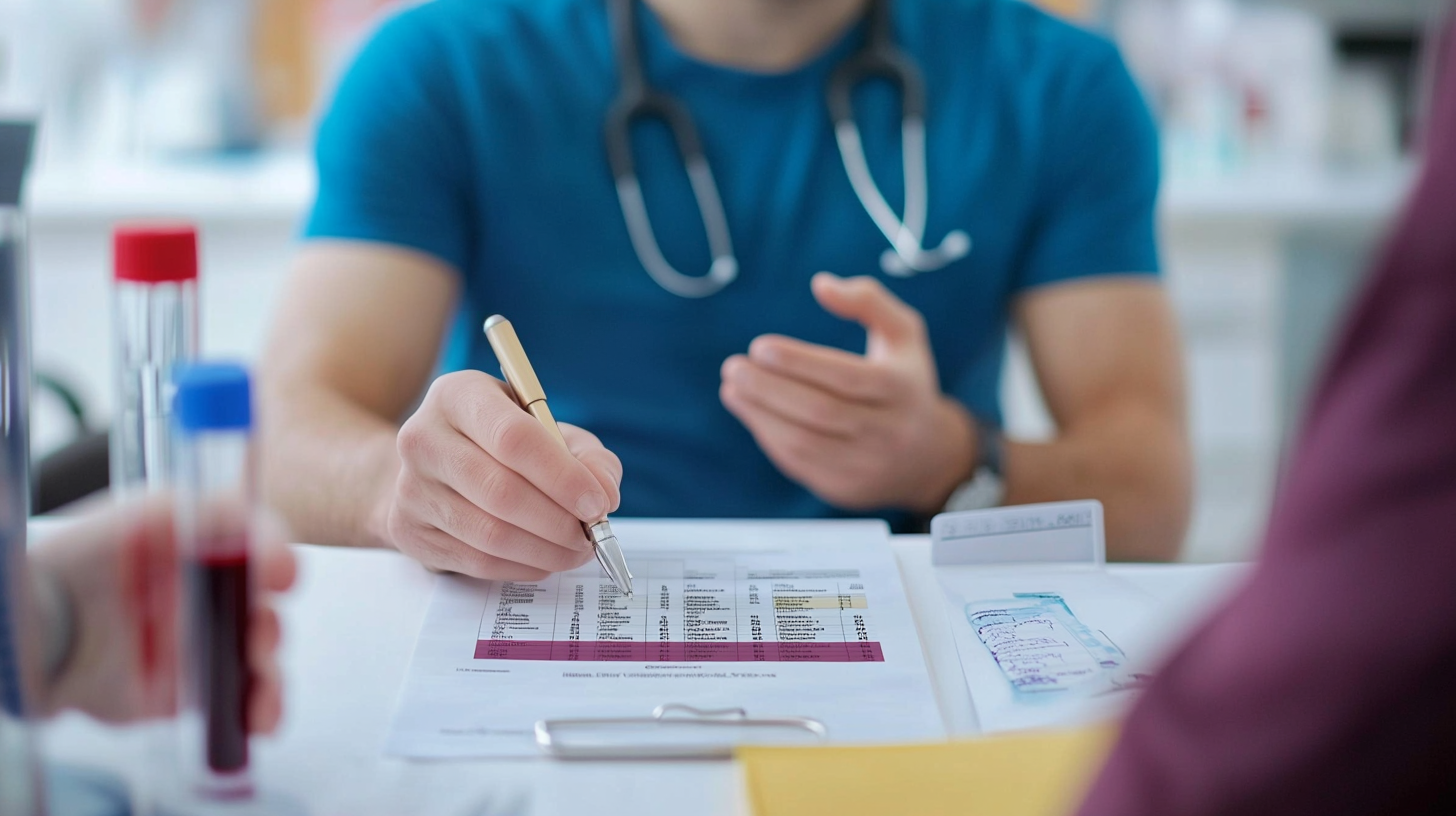The most effective way to get testosterone is through testosterone replacement therapy (TRT) prescribed by a doctor, though natural methods like exercise, sleep, and diet can also help boost levels.
Low testosterone is more common than you might think, and it affects far more than just your energy levels or libido. In fact, nearly 40% of men over the age of 45 experience low testosterone, or low T, according to the American Urological Association. This hormonal imbalance can lead to a range of issues, from difficulty building muscle to mood swings and even depression.
So if you find yourself constantly exhausted and feel like you can never get in shape – these could be more than just signs of a busy life—they might be your body telling you something is off.
Testosterone plays a vital role in muscle mass, mood regulation, and even heart health. Understanding the functions that testosterone performs in the male body, such as its critical role in puberty, the development of masculine features, and the support of sexual and reproductive health, is essential. If you’ve noticed any of these symptoms creeping into your daily routine, it’s worth understanding how to boost your testosterone levels.
In this post, we’ll dive into everything you need to know about how to get testosterone and who needs it.

Why Is Low Testosterone Such a Big Deal?
Low testosterone doesn’t just affect your body—it impacts your entire life. According to Harvard Health Publishing, untreated testosterone deficiency can have serious implications, including increased risks for cardiovascular issues, diabetes, and osteoporosis. Studies show that men with low T are at a higher risk for cardiovascular issues, diabetes, and even osteoporosis. Additionally, testosterone decline can hit earlier than expected, with some men experiencing symptoms in their 30s and 40s due to stress, lifestyle, or medical conditions.
Understanding Testosterone Deficiency
Testosterone deficiency, also known as hypogonadism, occurs when the testes do not produce enough of the hormone testosterone. This condition can arise from various factors, including aging, injury, infection, and certain medical conditions. The symptoms of testosterone deficiency are wide-ranging and can significantly impact your quality of life. Common signs include persistent low energy, reduced sex drive, erectile dysfunction, and a noticeable decrease in muscle mass.
If testosterone deficiency goes untreated, it can lead to more severe health problems such as osteoporosis, heart disease, and diabetes. Recognizing the symptoms early and seeking appropriate treatment is crucial for maintaining overall health and well-being.
What Are the Symptoms of Low Testosterone?
Before seeking treatment, it’s essential to recognize the symptoms of low testosterone, also known as low T or hypogonadism. Common signs include:
- Fatigue: Constant tiredness or low energy levels.
- Decreased Libido: Reduced interest in sexual activity or erectile dysfunction.
- Mood Changes: Feelings of depression, irritability, or a lack of motivation.
- Muscle Loss: Difficulty gaining or maintaining muscle mass.
- Increased Body Fat: Particularly around the abdomen.
- Sperm Production: Reduced sperm production affecting male fertility.
If you experience several of these symptoms, it’s worth considering ways to boost your testosterone levels.
Prescription Testosterone Replacement Therapy Options
If natural methods don’t provide enough improvement, testosterone replacement therapy (TRT) might be the solution. TRT helps restore optimal testosterone levels using medically supervised treatments. Testosterone is a controlled substance and must be obtained through a prescription. Here are the common TRT options available:
- Injectable Testosterone Injections are one of the most effective and commonly prescribed forms of TRT. The two most common injectable forms are testosterone cypionate and testosterone enanthate. Injections are typically administered weekly or biweekly, depending on your healthcare provider’s recommendations.
- Testosterone Gels and Creams For those who prefer non-injectable options, topical gels and creams can be applied to the skin daily. These products gradually absorb through the skin, releasing testosterone into the bloodstream.
- Testosterone Patches Similar to gels, patches are another non-invasive option. They are worn on the skin and deliver a controlled amount of testosterone throughout the day.
- Oral Testosterone Though less common, oral testosterone supplements are available. However, these tend to be prescribed less often due to concerns about liver health and inconsistent absorption rates.
- Testosterone Pellets Another long-term option is the use of testosterone pellets, which are implanted under the skin and release testosterone slowly over several months.
Each of these testosterone therapy options has pros and cons, and it’s essential to work with a healthcare provider to determine which method is best for you. To qualify for TRT, an individual must receive a diagnosis of testosterone deficiency from a doctor. Learn more about the various testosterone therapy options here.
Benefits of Testosterone Therapy
Testosterone replacement therapy offers several potential benefits, especially for men experiencing symptoms of low T. Extensive research supports the benefits of testosterone replacement, highlighting its effectiveness and safety.
- Increased Muscle Mass: Many men report improved ability to build and retain muscle.
- Enhanced Libido: TRT can significantly improve sexual desire and performance.
- Improved Mood: Men on TRT often experience a lift in mood and energy levels.
- Better Cognitive Function: Some men report improved focus and mental clarity after starting TRT.
- Bone Density: Appropriate treatment can help rebuild bone density and muscle mass in men suffering from testosterone deficiency.
Read more about the benefits of testosterone therapy.
Risks of Testosterone Replacement Therapy
A small percentage of men may experience immediate side effects from testosterone supplementation, such as acne, sleep apnea worsening, breast swelling or tenderness, or ankle swelling. Doctors also monitor for elevated red blood cell counts, which can raise the risk of blood clots.
Earlier observational studies suggested that long-term testosterone use might increase the risk of cardiovascular disease and could stimulate prostate cancer growth in men who already have the condition. However, recent clinical trials, which provide more reliable data, do not find heart and prostate cancer risks. For men with confirmed testosterone deficiency, testosterone replacement therapy does not appear to raise the risk of heart attack, stroke, or new prostate cancer development.
It’s essential to have a thorough discussion with your healthcare provider about the potential risks and benefits of TRT before starting treatment. This conversation will help you make an informed decision and ensure that TRT is the right choice for your specific situation.

How Do I Know If I Need Testosterone Therapy?
If you’re considering testosterone therapy, it’s essential to get a proper diagnosis. Your healthcare provider will likely conduct a blood test to measure your testosterone levels. Lab tests are crucial in diagnosing testosterone deficiency accurately. Low testosterone is typically defined as levels below 300 ng/dL, though symptoms and personal health history also play a role in determining whether TRT is appropriate for you.
Certain medical conditions can impair the body’s ability to produce testosterone, so it’s important to identify and address these underlying issues.
You can also check out our TRT clinic page to explore more about how testosterone replacement therapy works. TRT is the standard method to treat testosterone deficiency and requires a prescription.
Natural Ways to Boost Testosterone
For those looking to boost their testosterone levels naturally, several lifestyle changes can make a significant difference. Regular exercise, particularly resistance training and weightlifting, has been shown to increase testosterone production. A balanced diet that includes adequate protein, healthy fats, and carbohydrates is also crucial for maintaining optimal testosterone levels.
In addition to diet and exercise, getting enough sleep, managing stress, and avoiding exposure to estrogen-like chemicals can support healthy testosterone levels. Supplements such as zinc and vitamin D may also be beneficial. While these natural methods may not be as potent as testosterone replacement therapy, they can still play a vital role in supporting your body’s ability to produce testosterone.
Finding a Doctor for Testosterone Treatment
If you suspect you have testosterone deficiency, finding a doctor who specializes in testosterone treatment is essential. A qualified healthcare provider can diagnose your condition and develop a personalized treatment plan. When searching for a doctor, look for someone with experience in treating testosterone deficiency and who stays updated on the latest treatment options.
You can also seek referrals from friends or family members who have undergone testosterone treatment. A knowledgeable and experienced doctor will be able to guide you through the process, ensuring you receive the best possible care.
Monitoring and Adjusting Treatment
Once you begin testosterone replacement therapy, ongoing monitoring and adjustments are crucial for ensuring the treatment’s effectiveness and safety. Regular blood tests will help track your testosterone levels and detect any potential side effects. Your healthcare provider may adjust your treatment plan based on your response to therapy.
It’s essential to maintain open communication with your healthcare provider and attend regular follow-up appointments. This proactive approach will help you achieve the best possible outcomes from your testosterone replacement therapy, allowing you to enjoy the benefits of improved energy, mood, and overall health.
Conclusion
If you’re experiencing symptoms of low testosterone, there are several ways to boost your testosterone levels, including natural lifestyle changes and medical treatments. While some may benefit from adjusting their diet and fitness routine, others may require testosterone replacement therapy for more significant improvements. By consulting a healthcare provider and exploring both natural and prescription options, you can find the best solution to restore your testosterone levels and improve your overall quality of life.
For more information on treatment options, schedule a free consultation in-clinic or online.




